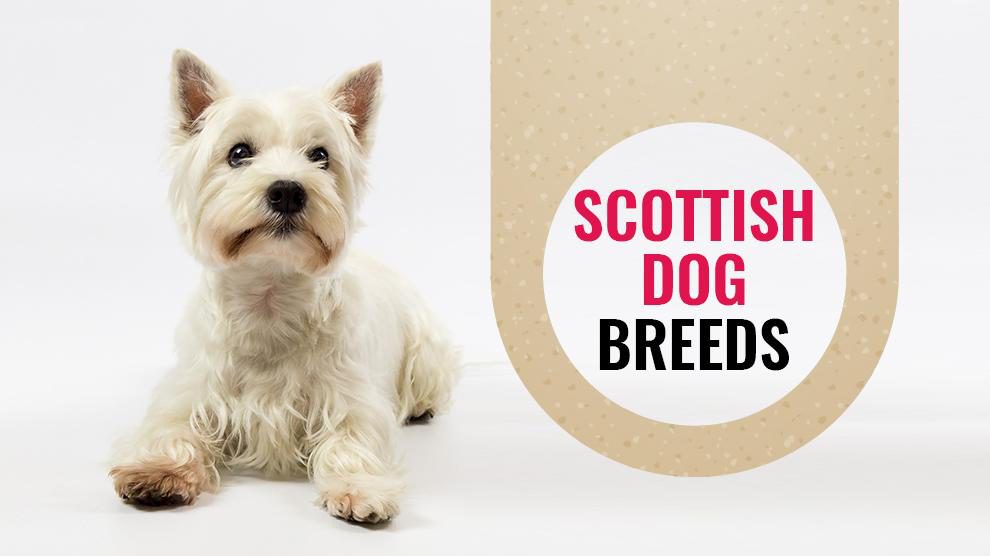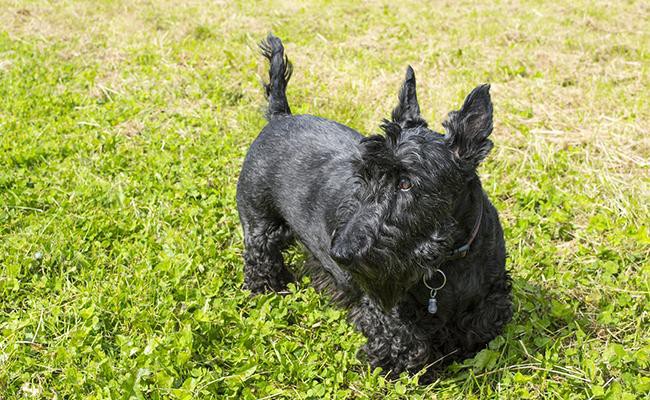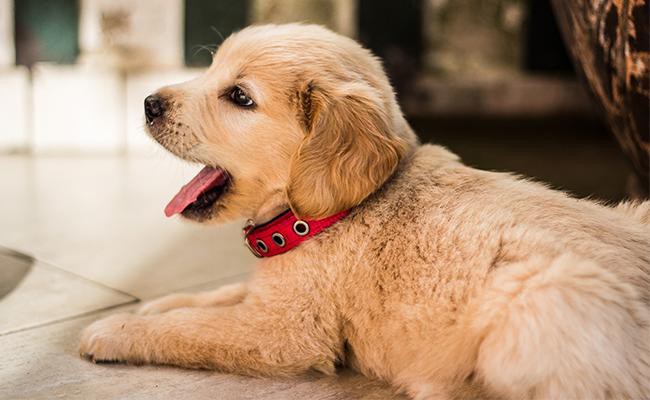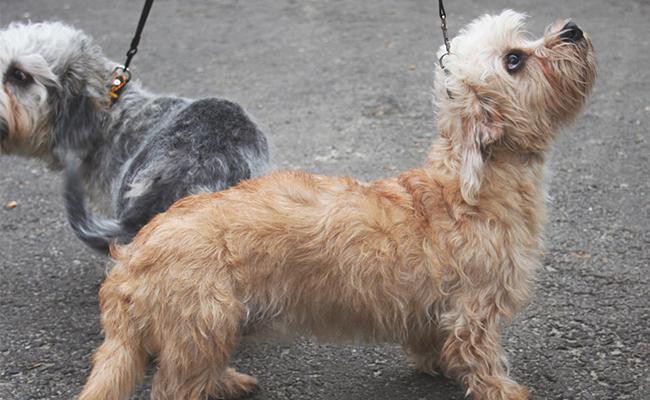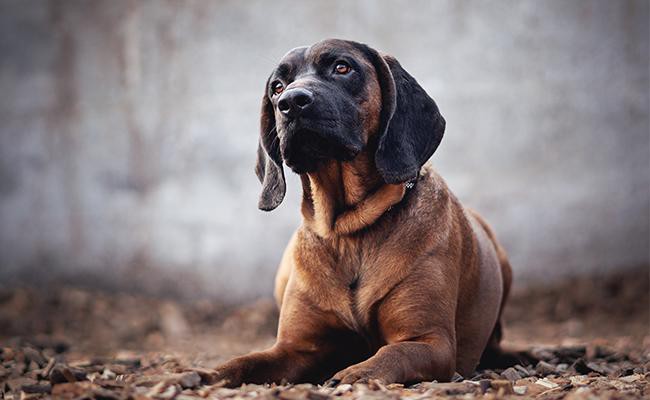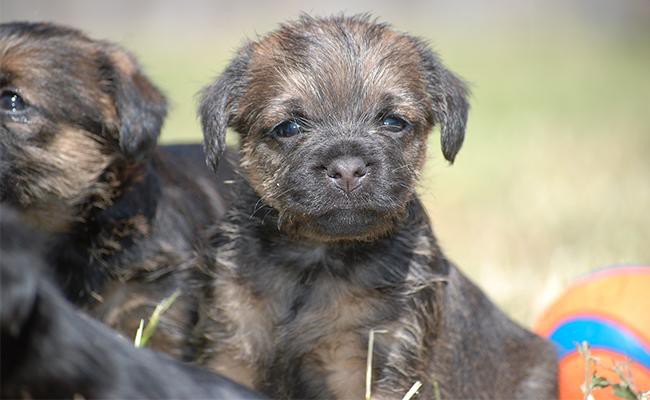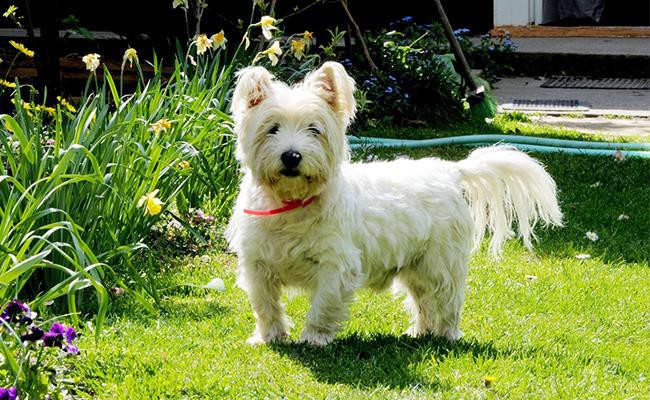Dog Pregnancy Calculator And Timeline
Scottish dog breeds are the most solid, confident, and independent companion of high sportsmanship. All Scottish dog breeds have a convincing, almost-unique character.
For instance, Scottish Terriers have earned a sobriquet “the Diehard” unrelenting dog breed.
Cloud-shattering high mountains, rough woodland, glittering lochs, and several kilometers of golden beaches. Welcome to Scotland!
Scotland landscapes will pulverize your laziness away. So, do all these Scottish dog breeds from the land of endless charm and beauty.
Scottish Terrier
- Height – 10 inches
- Weight – 18 to 21 lbs(female), 19 to 22 lbs(male)
- Lifespan – 12 years
History
Mainly developed to hunt badgers, foxes, and rats on the uneven Scottish Highlands, these breeds are particularly a well-respected dog breed.
Experts consider Scottish Terriers as the oldest breed of Scotland. Some dog lovers claim the breed to be one of the oldest dog breed native to Britain.
Unfortunately, the breed’s history has had its long share of controversy. In the late 16th century or early 17th century, King James I, owned several Scotties.
The first Scottie registered by the AKC, a cute dog named “Prince Charlie.”
Hollywood celebrities including Bette Davis and Humphrey Bogart owned Scotties. President Franklin Roosevelt owned a Scottie named Fala during the Second World War.
Appearance
The well-groomed Scottie has unique furnishings at the lower body, legs, and beard. The thick undercoat and wiry outer coat can be brindle-stripe, wheaten yellow, or a black pattern.
Straight tail and ears, and deep penetrating eyes convey sharp reflexes – a popular trait of England’s terrier breeds.
These Scotties are rightly described as social and smart, and their aloofness makes them great watchdogs. They love brisk walks and their hunting instinct is a cause of concern for other pets.
Temperament
- Scotties are alert, steady-going, and loyal
- An independent thinker of a high grade
- Known to be aggressive and violent with other dog breeds
- Displays power and ruggedness
Care
These dog breeds require scheduled grooming. They are, mainly, hand stripped.
Starting this method as early as possible would make them used to this process. Once a week is the best time to keep them clean and tangle free.
Periodic baths are acceptable with best-quality shampoo.
Food
Feed Scotties with the best quality food with the right quantity. Check for irritation or skin problems, and see if they have any eye issues.
If none of the above issues are found, then it’s assumed that the dog is eating the right quality of food.
Some terriers are known to love a moderate-protein diet.
Health Problems
A good dog breeder will make you understand the health issues a breed might face. Learn more about Scottish Terrier genetic problems such as liver shunts, cerebellar abiotrophy, Scottie cramp, and von Willebrand’s disease.
Visit the Scottish Terrier Club of America website – https://www.stca.biz for clear and accurate information about this breed.
Golden Retriever
- Height – 21.5 to 22.5 inches (female), 23 to 24 inches (male)
- Weight – 65 to 75 lbs(female), 55 to 65 lbs(male)
- Lifespan – 10 to 12 years
History
Dudley Marjoribanks, the founder, developed this breed during the rule of Victoria. For the 50 years, he painstakingly recorded the progress of the breed.
He wanted to develop a dog that can withstand tough terrain and rainy climate. He crossed Tweed Water Spaniel and “Yellow Retriever.” He later added Bloodhound and Irish Setter.
Dudley, with the passage of time, created one of the world’s most loved dog breed.
The first Golden Retriever was seen at a show in 1908. The calm, friendly, and sensible temperament of the breed won praises from all quarters.
President Gerald Ford owned a Golden retriever named Liberty
Appearance
A sound, smart dog with a pleasing personality. He’s bred as a strong hunting dog. Purpose, gait, and dog’s balance should be given more importance compared to other things in this breed.
Rish, bright golden colors of various shades. The outer coat appears resilient and firm and the undercoat is water-repellant.
Coat on the front of legs, paws, and head is short and very even. The natural look and feel of the breed should remain untouched and no clipping or cutting is permitted.
Temperament
Loyal, reliable, and affectionate. Unwanted aloofness towards other pets or dogs is not a good sign. Such behavior should be curtailed at the beginning itself.
One of the most loved dog breeds of all time. Golden Retrievers are the owner’s delight.
Care
Goldens shed continuously and shed their water-repellant coat at least once a year. A slicker brush will remove all the unwanted dead hair.
During periods of heavy shedding, brushing is a daily activity for dog lovers.
Trim the nails regularly and ensure that the dog is dry before brushing.
Food
Some Golden Retrievers are prone to obesity, so check your pet’s weight level and calorie consumption. Treats are good but we advise moderation.
Avoid high-fat content food items. Feed your puppy high-quality age appropriate dog food.
Health Problems
These dogs are mostly healthy dogs. They are susceptible to health conditions including subvalvular aortic stenosis, progressive retinal atrophy, pigmentary uveitis, and juvenile cataracts.
Dandie Dinmont Terrier
- Height – 8 to 11 inches
- Weight – 18 to 24 lbs
- Lifespan – 12 to 15 years
History
The terrier came into prominence in the 16th century. Described as a “unique dog terrier owned by hunters,” the breed did remarkably well against badger and otter.
Sir Walter Scott loved this breed. It is believed that every Dinmont alive today in a way or other belongs to the “Old Ginger.”
Scott’s novel received good popularity and finally came to be called “Dandie Dinmont’s terriers.”
French king Louis owned several Dandie Dinmont terriers. Even today, these dogs have loyal followers and wellwishers.
Appearance
These dogs are low-stationed ground dogs. The head appears is fairly large and prominent as well. They have dark round, large eyes.
The scimitar-shaped tail is covered with a double coat. The coat is penciled or pilly.
Colors range from pepper to mustard. Pepper means light silvery gray to dark bluish black. Mustard means pale fawn to reddish brown color.
Temperament
Brilliant, reserved, determined, and independent. These dogs combine dignified nature along with boldness and tenacity.
Care
Dandie Dinmont Terriers are low shedders. You should remove the dead hair once a year. You can hire a professional groomer for this job.
Using forefinger and thumb, longhairs can be plucked.
They need daily brushing to prevent matting. Clean the ears once a month to prevent any infections in the ear and trim the nails too.
Food
Feed Dandie Dinmonts vet recommended high-quality dog food. Never hesitate to contact your breeder or vet for any information.
Health Problems
The breed is highly healthy. Some dogs develop lymphoma. A Dandie’s ears need regular checking. Brush their teeth with vet-recommended toothpaste.
They are normally free from genetic disorders.
Border Collie
- Height – 18 to 21 inches(female), 19 to 22 inches(male)
- Weight – 30 to 55 lbs
- Lifespan – 12 to 15 years
History
The Roman invasion of Britain influenced every aspect of the local’s life. The occupying legions produced their own livestock.
Herding dogs are good to follow. The heavy-boned dogs brought in by the Romans stayed popular for around three centuries.
Crosses between the Viking spitzes and old Roman dogs produced agile and compact herders. Thus, Border Collies came into limelight.
Border Collies are the world’s best herding dog. Being one of the smartest dog breeds, Borders have won countless sheepdog trials.

Appearance
These breeds appear medium-sized, well-balanced, displaying agility, power, and gracefulness. A Border Collie showcases endless endurance and effortless movement.
They remain alert, keen, and are extremely smart.
The aspects of good alert expression, temperament, and movement that improves the dog’s ability. Broken teeth and scars in the dog are acceptable.
The coat can be dense, weather resistant with the outer coat slightly wavy or straight. They appear in all combination or colors.
Temperament
These dogs are responsive, smart, keen, and robust. They are aloof towards strangers and it is friendly towards friends.
Border Collies should not show resentment, dullness, fear, or shyness.
Care
The smooth coat appears coarser and shorter while the rough coat appears feathered and medium-length.
Weather-resistant, dense double coats.
Use a pin brush twice a week. Daily brushing is recommended during shedding season. Trim the nails on a regular basis.
Food
They do well on both home-prepared and commercially manufactured dog food. Treat them with love and care.
Freshwater is recommended 24/7.
Health Problems
A responsible breeder will check for conditions including –
- Trapped neutrophil syndrome
- Neuronal ceroid lipofuscinosis
- Collie eye anomaly
- Epilepsy
- Deafness
- Progressive retinal atrophy
- Hip dysplasia
Bloodhound
- Height – 23 to 25 inches(female), 25 to 27 inches(male)
- Weight – 80 to 100 lbs(female), 90 to 100 lbs(male)
- Lifespan – 10 to 12 years
History
There is no credible information about this breed’s origins. In a 3rd century work, there is a mention about a hound. These hounds have excellent scenting powers.
The Bloodhound, thus, remains the oldest hound that traces by scent.
These hounds were refined in Europe about a few centuries ago. The bishops were responsible for making this breed popular.
These breeds were called “blooded hounds” where “blooded” means “aristocratic blood.”
Police around the world love these hounds. Bloodhounds don’t give up until they reach the end of the trail. There is no scenting device in this world that works as efficiently as a Bloodhound’s nose.
Appearance
The Bloodhound is very powerful and stands much taller than other hound breeds. The skin appears extremely thin and loose. The coat is hard and rigid.
They have the only fur.
The colors are tan and black, tan and liver, and red. A small patch of white is visible on the tip of stern, feet, and chest.
Temperament
Bloodhounds are friendly and kind dogs. His nature is sensitive to kindness and they are neither harsh with other pets or companions.
His nature is quite shy and equally reciprocative to kindness and behavior by his master.
Care
They have a short, thick coat. These breeds shed twice a year. Choose a medium-sized bristle brush or a hound glove to remove all the dead hair.
Brushing promotes quick hair growth. It distributes skin oils and promotes new hair development.
They should be bathed to keep them free from doggy odor. Trim the dog’s nails.
Food
Treat them with best quality dog foods. Some canines are easily susceptible to obesity. Treats are recommended but in moderation.
Talk to your vet and choose the right quality of dog food.
Health Problems
Bloodhounds can suffer from bloat. They are notorious for munching everything and anything, which can lead to a regular vet visit.
Their ears should be checked for infection. Check the dog’s skin wrinkles. Wipe them with a dry, wet cloth.
Brush the dog’s teeth on a regular basis.
Border Terrier
- Height – 12 to 15 inches
- Weight – 11.5 to 14 lbs(female), 13 to 15.5 lbs(male)
- Lifespan – 12 to 15 years
History
In those days, old-time farmers created agile terriers to chase and dispatch hill fox. This meant developing game terriers with strong legs to run with huntsmen and foxhounds.
These dogs were tireless, powerful, and active. The Border Terriers are terriers who moves on well with fellow companions.
They are an excellent option for folks in Britain looking for low-maintenance, and spirited maintenance companion.
Appearance
Border Terriers are an active, alert breed of medium bone. The head appears like an “otter” head. He should be agile, active, and alert.
His expression is implacable and fearless.
Temperament
Border Terriers temperament exemplifies his breed to a great extent. By instinct, he’s easily trained, obedient, friendly, and good-natured.
Care
These dogs have a double coat. Fluffy undercoat and wiry outer coat. They shed seasonally. A quick brushing is enough.
During shedding season, you should use a stripping tool and spend 30 minutes or so.
The outer coat expels dirt. The bathing compromises this ability. These dogs can be regularly cleaned with a brush and a towel.
Border Terrier’s nails needs regular grooming.
Food
Some Border Terriers are prone to overweight. Give them best-quality vet specified dog foods. If you have doubts, talk to your vet without any hesitation.
Health Problems
A responsible breeder will screen the stock for common disease including –
- Allergies
- Heart problems
- Seizures
- Juvenile cataracts
- Progressive retinal atrophy
- Hip dysplasia
Cairn Terrier
- Height – 9.5 inches(female), 10 inches(male)
- Weight – 13 lbs(female), 14 lbs(male)
- Lifespan – 13 to 15 years
History
The Cairn Terrier patrolled the yards, farms, and game preserves of Scotland. Understanding the origins of this breed is not that simple because they were clubbed together as Scotch terriers.
Cairn Terriers were popular since the early 1600s, most splendidly on the land of Skye Terrier.
Some time ago in Scotland, a group of stones to identify a grave was simply called a “Cairn.”
Rodents would find hiding places underneath these strong rock piles. These dogs were bred to sniff out the little creatures and rout out these problems.
When matched in packs, these Cairns also worked on small predators including otters, foxes, and other predators. The dog’s alertness, smartness, built, toughness and character were unique traits that helped them well when digging and handling sharp-toothed mammals.
The breed’s public image received a tremendous response when a Cairn Terrier managed to bag a role in the movie “The Wizard of Oz” in 1939.

Appearance
Strong but not massively built. Cairns stand well on their forelegs with a well-balanced body with a proportionate build.
They have a strong weather-resisting coat. Pointed ears and the head is free from long hairs.
Active, strong, well-muscled body with deep ribs. The coat is water-repellant and hard. The outer coat looks strong and harsh while the undercoat is soft and short.
Temperament
Cairns are brilliant. They are steadfastly loyal and devoted pets. Active and trustworthy.
Some terriers are excessive diggers and some aggressive barkers. This is not ideal for those who want a calm dog.
These dogs chase and hunt rodents and other small predators untiringly. If you are searching for a happy, brisk pet, then Cairn Terriers are your best bet.
Care
Weekly combing and brushing combined with hand-stripping are recommended. These dogs breeds are generally easy maintenance pets.
Having a slicker brush and comb will make your grooming tasks simple.
Spend quality time with your pup and this would increase the bond between you and your pet. Trim the nails once a month.
Food
Choose the best quality kibble. Cairn Terriers are susceptible to food allergens including soy, wheat, and corn.
Avoid foods with preservatives and artificial sweeteners. Kibble reduces plaque buildup and tartar.
Give treats sparingly. Too many treats can lead to obesity in your pet. Be mindful. Talk to your vet if you have any doubts.
Health Problems
Cairns are normally hale and healthy dogs. No responsible breeder will behave erratically when it comes to testing their stock.
Please check your Cairn terrier for these conditions-
- Kidney Dysplasia
- MVD
- PSVA
- Heart problems
West Highland White Terrier
- Height – 10 inches(female), 11 inches(male)
- Weight – 15 to 20 lbs
- Lifespan – 13 to 15 years
History
The breed we all love today as the White Terriers came into prominence in the 18th century. The Malcom family began breeding white dogs called Poltalloch.
This breed was also called Roseneath Terrier. With time, Westies became popular.
Two popular brands Black & White Scotch whiskey and Juicy Couture used Westie’s image to induce customers.
Appearance
Well-balanced, small, game looking terrier. Westies exhibit excellent showmanship. The coat is around 2 inches long, with strong undercoat.
The coat should appear neat and tidy. Preferred color is white.
Temperament
Excess pugnacity and timidity. Friendly, courageous, and self-reliant. Alert and smart. Westies are the best dogs to own.
Terrier Care
Regular grooming is recommended. Plucking or stripping the dead hair is the best way to handle the terrier dog.
Pet parents should get their dogs’ coat neatly clipped. Combing and daily brushing is a must. Westies have a hard coat and bathing can increase the mat.
Food
Westies have a very sensitive digestive system. These dogs are bred in Scotland. They are known for their friendly companionship.
Some Westies perform better on foods that consist of hydrolyzed protein.
Feed the exact amount to your pet according to the label on the food packet. Feed them lamb, beef, or chicken.
Health Problems
Check Westies for conditions such as patellar luxation and cardiac problems. Brush their teeth using a vet-recommended toothpaste.
Regular vet visits and parasite control.
Recommended health checkups for your pet-
- Ophthalmologist Test
- Patella Test
- Hip Test

